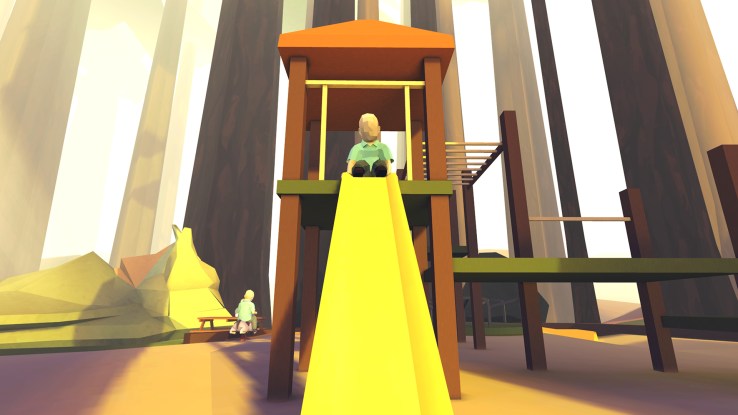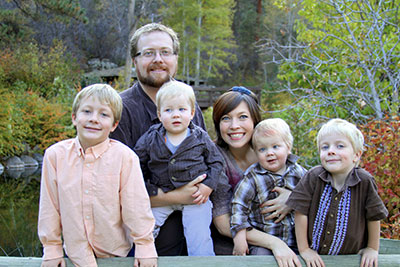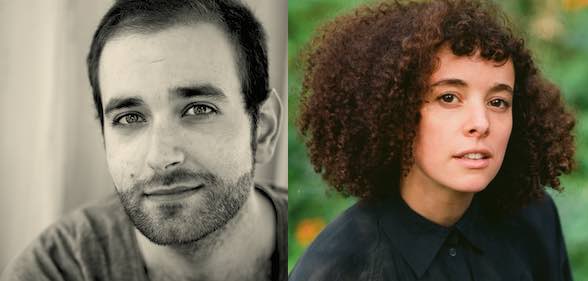When is a game not a game? When it becomes art, a collection of found objects, and a memorial. That’s what Ryan and Amy Green created when they made That Dragon, Cancer, a luminous game inspired by the life of their son Joel.
Doctors diagnosed Joel with an Atypical Teratoid Rhabdoid Tumor, a cancer that could not be vanquished through conventional means and that recurred every time they fought it with chemotherapy and radiation. Joel died in March 2014 at the age of five. He exhibited an endless sense of wonder and play throughout his life even as the cancer progressed.
After Joel died, Ryan poured his grief into his game and it’s apparent from the first moment of play. The game features the voices of Joel and his family and ends in a unique and moving way as you, the player, decide who, in the end, is losing who. It’s a masterpiece of the indie gaming arts.
I spoke to Green as well as Malika Zouhali-Worrall and David Osit, the two filmmakers behind Thank You For Playing, a documentary on the Green family and their game.
TC: Ryan, the story and the game are heart-wrenching. What did you want to tell when making it?
Ryan Green: We wanted to share our love for Joel, the pain of our loss and the beauty we’ve found in our life in the shadow of his illness. We wanted to mourn in the way we knew how, and hopefully by doing so, invite other people to mourn with us. Not for Joel only, but for their own loss.
TC: Tell me about this documentary project. Why did you guys make the movie?
Zouhali-Worrall and David Osit: From the moment we first learned about That Dragon, Cancer we were intrigued by the idea that Ryan and Amy had set out to document their very personal and difficult experiences raising a terminally-ill child in a video game. We wanted to understand why they had chosen a video game, a medium so typically associated with violence and gore, or mindless distraction. Once we met the family in person and started filming, we also became compelled by the fact that they were clearly engaged in a remarkable process of self-documentation, and in the process, creating a beautiful and profound work of interactive art that was truly pushing the boundaries of what a video game can be.
Ultimately, we wanted to explore the story of a family that had decided to publicly share and talk about an experience that most people keep very private – in many ways, it felt like the Greens were flouting a kind of social taboo that seems to exist around sickness, bereavement and grief. And they were doing it in such an unusual medium, that it felt like a turning point in our understanding of video games, and what they’re capable of.
TC: Art is everywhere, but can games be art?
RG: I guess that depends on how you define art. More important than the definition of art to me is those outside of games realizing that videogames, just like any other medium, allow us to explore what it means to be human. The medium can bear the weight of human suffering, joy and intimacy. I hope that projects like ours will invite others to share their heart in the interactive space, and start conversations that I believe we should be having.
ZW & DO: For so long, video games have been defined by a few genres chosen by a very small group of people who had access to the significant financial resources and coding skills required to build a game. But with the introduction of affordable and accessible programs, from Scratch to Unity, there is now far more diversity among game developers and artists, and the result is a much wider range of stories being told and storytelling approaches being used. Works like That Dragon, Cancer clearly illustrate that video games, and interactive digital media in general, are simply another artistic medium. So in the same way you wouldn’t ask if paintings or poems can be art, it is no longer relevant to ask if games can be art.
TC: What is the future of gaming? Is it more like this? Is gaming doomed because of big budgets and the need to sell copies?
RG: I think videogames will always thrive because they are precious to those who play them and those who make them. However, the production of videogames will always be largely constrained by the financial support of video game creators. If players want more autobiographical voices, and experimental voices in video games, supporting kick starters, patreons and game sales of creators is essential. The future of gaming will be decided by players and creators sharing their hearts and sharing their resources to guide it.
ZW & DO: Based on games we’ve played and various developers we’ve talked to during the process of making this film, we’re pretty confident that there is definitely a growing space in the gaming world for this type of game. Most creative and artful industries have indie communities that are focused on pushing the medium, and in the video game world that’s definitely a community that’s growing right now.
TC: Why do we need a movie about a game? What was the impetus?
ZW & DO: We wanted to tell the story of the process and emotional journey behind the creation of this game. While the game is itself also a work of creative nonfiction, we were intrigued by the story behind that process – what is involved in analyzing your own experience to figure out the story you tell about yourself? And how does that work in a video game? There were also some fascinating ways in which Ryan & Amy, and their co-creator Josh Larson, used and inverted various tropes of gaming – from go-kart racing to the endless runner – to tell the story.
TC: What do you think of the indie game scene in general?
RG: I have not found a more inclusive, creative and collaborative group of people outside of the indie game scene.
ZW & DO: It’s been really great to get to know the indie gaming scene! During the making of the film we also watched Ryan and Amy get to know it – what’s clear is that they’ve been profoundly moved and touched not only by the way they’ve been accepted by the community, but also by the general attitude of acceptance in the indie gaming world – where in some crucial ways it seems that there’s a push to create space for and even celebrate diversity and difference.
TC: Ryan, please tell us what happens next. How is your family now?
RG: Our family is good. Our daughter Zoe is almost 2 and a complete joy to our family. We hope to continue to create, and looking for ways to continue to keep our team working and creating together for whatever is next.


